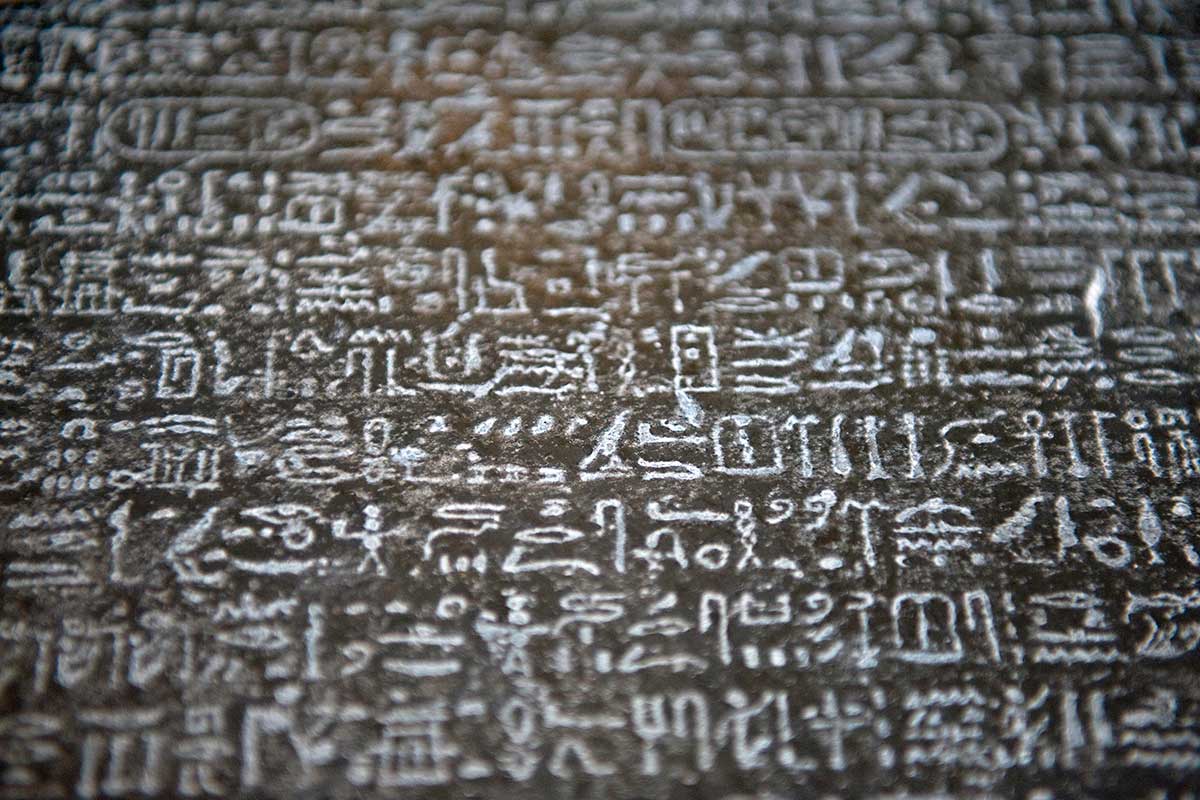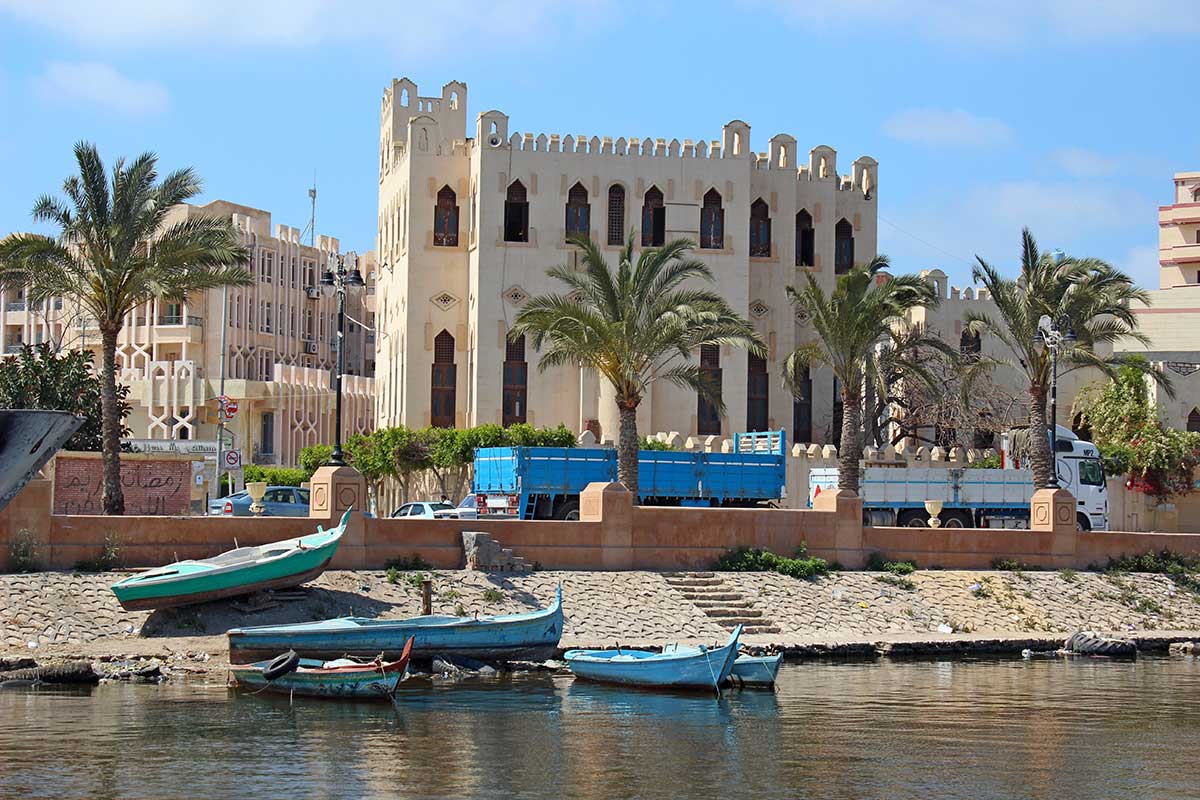If you’re looking to experience the purest form of Egypt, a trip to the city of Rosetta is a must. You may have heard of this city due to the discovery of the Rosetta Stone, which revolutionized our understanding of ancient Egypt. Rosetta is also known for being one of the two branches of the Nile in the Delta, along with the Damietta branch.
However, it’s important to note that Rosetta isn’t the most touristy city in Egypt. There are many other destinations in the country that surpass it in terms of beauty and infrastructure. Nevertheless, Rosetta offers some unique attractions that may interest travelers who have a passion for the country. Therefore, our agency provides you with the opportunity to organize a half-day or full-day excursion from Alexandria or Cairo, where you can experience the highlights of Rosetta. On this page, we will give you a glimpse of what you can expect from this hidden gem of a city.
Rosetta, also known as Rashid or Rasheed in Egypt, is a small city situated near the western branch of the Nile River, where it meets the Mediterranean Sea. While it has undergone significant growth over the past few decades, with a population of approximately 300,000 today compared to 50,000 at the end of the 20th century, it is still considered relatively small. Rosetta is administratively part of the Beheira Governorate.
Despite its proximity to the Mediterranean Sea, Rosetta is not considered part of the “Mediterranean coast” as it lacks beaches suitable for tourism. Instead, it is located in the Nile Delta region, where its temperate climate sets it apart from the rest of Egypt. Summer temperatures usually do not exceed 31°C, while winter temperatures typically do not drop below 10°C.
The role of Rosetta in ancient Egypt is not well-documented, although its strategic location suggests that it held some importance. However, it is worth noting that the landscape of the region was vastly different during that time, with the Nile River having not just two but seven branches. Moreover, the city likely underwent several name changes during the ancient and Ptolemaic periods, making it challenging to ascertain its true significance.
More information is available about Rosetta during Islamic Egypt after the Arab conquest. The 11th-century geographer and writer Ibn Hawqal mentioned public baths, palm groves, markets, merchants, and other features of the city. However, during the medieval period, it would have played a more defensive than commercial role, overshadowed by nearby Alexandria. Its formidable fortress, however, did not deter the French from briefly occupying the city during the Seventh Crusade in the mid-13th century.
Under Ottoman rule in the 16th century, Rosetta began a period of growth at all levels, which continued until the 19th century. The city’s buildings and mansions with Ottoman-style architecture are a beautiful testament to that time. During this period, its port was one of the most important in the country, and the city was a regular destination for British travelers.
However, the city was not spared from the battles of the Napoleonic Wars and the Campaign in Egypt. In 1799, the French “captured” the Rosetta Stone, and Egypt became embroiled in tough fighting between the French and British. Two years later, despite the French defeat, the British did not return the Stone to its original location, and it was transferred to the British Museum in London, where it remains on display today.
The 20th century saw a decline for Rosetta, with its port playing a secondary role compared to that of Alexandria. Currently, it is not part of major tourist circuits, allowing the city to maintain its own pace of life, which is more rural in some respects. Some corners of the city seem frozen in time, but recent renovations and restorations provide travelers with an opportunity to experience a rich cultural program during their stay.

For many travelers taking their first steps into the world of Egyptology, the Rosetta Stone raises the question of what its true importance was. Although it may appear to be just another rock with engravings from the Pharaonic era today, it caused a real sensation in the early 19th century.
To understand the significance of the Rosetta Stone, we need to put it in context. The name refers to a granite stele that was likely displayed in a temple in Sais, an important city in ancient Egypt that eventually disappeared after the Arab invasion. During the medieval period, Sais became a quarry, and many blocks from ancient Pharaonic buildings were used to construct new structures in the Delta.
The stele was dismantled and transported to Rosetta to be used as construction material in the city’s fortress. Centuries later, during the Napoleonic invasion, a French soldier discovered the stele during some remodeling work, and it was placed under the custody of the French army. However, after surrendering to British troops in 1802, the stele was shipped and taken to London.
The discovery of the Rosetta Stone is an intriguing tale, but what is its significance in Ancient Egypt and modern Egyptology? To grasp its importance, we must examine the inscriptions on the stone, which is a decree written in three scripts: hieroglyphics, demotic, and ancient Greek, proclaiming the divine status of Ptolemy V.
At the time of its discovery, hieroglyphic writing was still a mystery, which hindered the understanding of Pharaonic civilization. However, a comparative study of the texts led to the decipherment of hieroglyphics, enabling the rediscovery of an ancient culture by the world. The architect of this “translation” was Jean-François Champollion in 1822.
Today, the Rosetta Stone is a source of pride for the local population, as it brings recognition to their city on a global scale. However, visitors to Rosetta and Egypt will have to make do with a replica, as the original is housed in the British Museum in London.

Rosetta may not be a city geared towards tourism, with limited development of tourist infrastructure such as museums and hotels. Therefore, it is best to plan a day trip from Alexandria or Cairo without an overnight stay.
One of the most impressive monuments in Rosetta is the fortress of Rosetta, also known as Fort Julien. Located approximately 5 km north of the city, on the banks of the Nile River, and about 4 km from its mouth in the Mediterranean, the fortress was built during the Arab period in the 15th century, at the end of the Mamluk period, during the reign of Sultan Qaitbay. The fort was reinforced in the 16th century and, more importantly, in 1799 by the French army, which led to the discovery of the Rosetta Stone. The complex acquired its definitive layout with the addition of bastions on its corners.
One notable feature of Rosetta is its collection of Ottoman-style mansions and houses, which lend a distinct character to the streets. This architectural style is relatively rare in Egypt, making these buildings all the more special. Look for these distinguishing characteristics:
Two excellent examples of this style of architecture are the Amasyali House and the Abu Shaheen House. Both have been restored and are open to the public, offering visitors an opportunity to explore their interiors, admire their decorative roofs, observe their furniture, and learn about the machinery used for daily tasks.
In addition to the Ottoman-style mansions and houses, Rosetta also boasts the recently restored Rosetta Museum (Rashid Museum), which showcases a replica of the famous Rosetta Stone along with ethnographic exhibits. Visitors can gain a better understanding of the stone’s significance here.
For those interested in Islamic architecture, Egipto Exclusivo can arrange a tour of the city’s most notable mosques. The Abou Mandour Mosque, situated on the banks of the Nile, is particularly impressive, as is the El-Abbasi Mosque, where the influence of Ottoman architecture can be appreciated in the minaret and the distinctive red and black brickwork.
To experience the unique charm and character of Rosetta, take a stroll through the bustling main souk or wander the streets to discover the similarities and differences between Rosetta and other parts of Egypt. The main souk, which extends through central streets like Sharia Port Said near the Amasyali House, is a great place to soak up the local atmosphere.
Rosetta is not a popular tourist destination, and the only way to access it is by road. The city doesn’t have an airport or train station, and its river stretch is not navigable. You can rely on regular bus services known as microbuses, which are commonly used by locals. However, these services are not specifically designed for foreign tourists.
Alternatively, you can opt for a private taxi to travel to Rosetta, and Egipto Exclusivo can arrange it for you as part of a full-day tour that includes city tour and lunch, if desired.
We can arrange this service from any location, but especially from Cairo or Alexandria. The distances and times for this trip are:
If you need more information about traveling to Rosetta, Egipto Exclusivo can help you plan your trip and integrate it into a broader itinerary if required. Contact us now and enjoy a unique day away from the typical tourist spots!


Fill out the form below to receive a free, no-obligation, tailor-made quote from an agency specialized in Egypt.
Travel agency and DMC specializing in private and tailor-made trips to Egypt.
Mandala Tours, S.L, NIF: B51037471
License: C.I.AN-187782-3